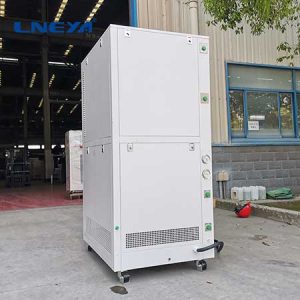ラボ用チラーの目的は何ですか?
FL +5°C ~ +35°Cウォーターチラー are common in life science research, drug discovery, material testing, wafer production and wet chemistry. They are used to cool or cool samples, thaw reagents or cell media, and supply temperature-controlled water to external equipment.

The laboratory circulator and cooler accurately control the temperature of deionized water, bath solution or PH neutral buffer solution for delivery to integrated or external water bath, analytical instrument, incubator and wet treatment station.
The main function of the cooler is to maintain the heat balance of the hydraulic system and keep its system temperature within the specified range. Generally, the temperature range is 35 ℃ – 55 ℃.

When the temperature is higher than 55 ℃, the cooler will start to reduce the oil temperature. Hydraulic equipment used in southern China generally requires cooling system, otherwise the equipment will be damaged due to high temperature in summer.

The laboratory circulator and cooler consists of a reservoir connected to a cooling or heating system regulated by a digital or analog controller. The integrated water reservoir or water bath can be opened for easy access, or closed with gable cover to prevent heat loss. Some circulators include pumps that deliver water to external devices, such as refractometers, photometers, or viscometers.
Adopt fluorine-free refrigerants that meet international environmental protection standards, and operate with green and low energy consumption;
The part in contact with the liquid is made of 304 stainless steel or quality plastic; Magnetic circulating pump is adopted, which changes from dynamic seal to closed static seal to avoid medium leakage.
Fully closed liquid storage tank and circulation pipeline reduce the problems of volatilization or combustion of ethanol and other refrigerant carriers exposed to the air, which is safer, less loss and faster refrigeration; High quality fully enclosed compressor is adopted, with low noise and high efficiency to ensure long-term stable operation.
 LNEYA
LNEYA
 简体中文
简体中文


















































































